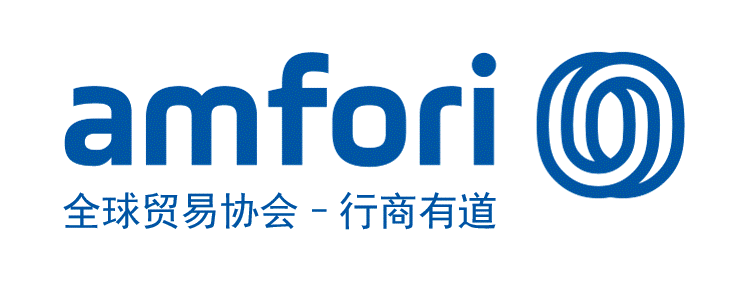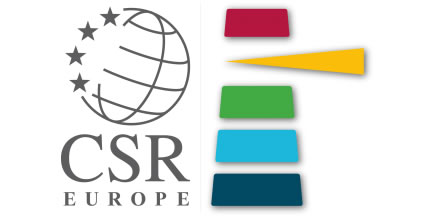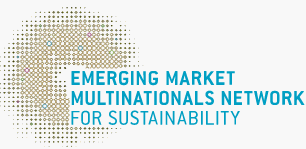A Comparative Analysis of the Guidelines for Listed Companies' Sustainability Report and ISSB Standards
2024-10-24未知责任编辑0
As we usher in the year 2024, sustainability information disclosure has embarked on a fast lane of growth, moving ahead with significant momentum.
In June 2023, the International Sustainability Standards Board (ISSB) issued two sustainability disclosure standards: IFRS S1 General Requirements for Disclosure of Sustainability-related Financial Information and IFRS S2 Climate-related Disclosures (collectively referred to as the “ISSB Standards”), establishing a unified global benchmark for corporate sustainability disclosures. On April 12, the Shanghai, Shenzhen, and Beijing Stock Exchanges released Guidelines for Self-Regulation of Listed Companies—Sustainability Report (hereafter referred to as the “Guidelines”), representing a comprehensive approach to sustainability information disclosure in China and marking a new era for listed companies in terms of sustainability report.
Both aiming to lead and standardize corporate sustainability disclosures, what are the similarities and differences between the Guidelines and ISSB Standards? Commissioned by the China Association for Public Companies, GoldenBee Consulting, a member of the Association’s ESG Committee, has prepared a report to compare the two.
In general, the Guidelines and ISSB Standards resemble each other in their general framework, basic concept, and disclosure principles, framework, and requirements. However, there are some nuanced differences in format, topic settings, and climate-related disclosures.
01 Similarities Analysis
● General Framework
Both the Guidelines and ISSB Standards adopt a hybrid framework combining general information disclosure rules with specific topic-based guidelines.
The Guidelines consist of 19 general rules on information disclosure, 37 requirements for specific topics disclosure, and 7 appendices and definitions. The ISSB Standards include IFRS S1 as the general requirement and IFRS S2 for specific topic disclosure requirements.
● Basic Concept
Both the Guidelines and ISSB Standards require entities to disclose how sustainability concepts are integrated into their operations and management, enabling stakeholders to understand governance, management, practices, and performance related to sustainability.
● Disclosure Principles
Both the Guidelines and ISSB Standards require that information disclosures be objective, truthful, complete, and accurate, with comparability, verifiability, timeliness, and clarity. Additionally, both provide conditions for disclosure exemptions, such as cases involving business secrets. Regarding cost control, both advise using methods that match the company’s capabilities, previous work results, and resources to gather reasonably available information. Both also specify effective dates and transition period arrangements, allowing for the exclusion of certain quantitative indicators in the first reporting period due to the disclosure difficulties of climate-related risks and opportunities.
● Disclosure Framework
Both the Guidelines and ISSB Standards require that the disclosures of major topics shall follow the four key aspects: Governance, Strategy, Risk Management/Impacts, Risks, and Opportunities Management, Indicators and Targets. For governance, both requires entities to disclose the organizations and reporting mechanisms responsible for managing and overseeing sustainability-related risks and opportunities, as well as the measures and methods used to integrate these risks and opportunities into decision-making processes. Regarding strategy, entities are required to disclose how sustainability-related risks and opportunities impact their business model, operations, development strategy, and financial situation. In terms of risk management, both require the disclosure of processes and methods used to identify, assess, and manage sustainability-related risks, and how these processes are integrated into the company's internal management. For indicators and targets, entities must disclose their sustainability goals, relevant metrics, and progress toward these goals.
● Climate Change Disclosure
Both the Guidelines and IFRS S2 require entities to disclose information related to climate change governance, strategy, risk management, and metrics and targets. This includes the impact of climate change on business models, the resources allocated by companies for implementing transition plans, and progress in these areas. Both also require the disclosure of greenhouse gas (GHG) emission reduction targets and progress, with specific mention of carbon credits disclosure.
02 Differences Analysis
● Structure
The Guidelines covers information disclosures requirements related to environmental, social, and sustainability governance. In contrast, the ISSB Standards follow an S1 + series format, with two standards, S1 and S2, already issued, and more specific standards expected to be released in the future.
● Disclosure Framework
The ISSB Standards emphasize the disclosure on “risk management”, while the Guidelines mandates disclosure on “impact, risk, and opportunity management”. According to the Guidelines, in addition to disclosing management measures for sustainability-related risks and opportunities, entities shall also disclose management measures for sustainability impacts.
● Topic Settings
The Guidelines identifies 21 specific topics, including 8 environmental, 9 social, and 4 sustainability governance topics. The ISSB Standards, by releasing the IFRS S2, clarify the climate-related disclosure requirements, as well as industry-based topics disclosures with reference to the Sustainability Accounting Standards Board (SASB) Standards.
● Climate-Related Disclosures
The Guidelines encourages entities, if able, to disclose Scope 3 emissions, while IFRS S2 mandates Scope 3 emission disclosures. The Guidelines also encourage entities, if able, to assess its climate adaptation through scenario analysis, while IFRS S2 requires entities to conduct climate-related scenarios analysis to assess climate resilience, ensuring the alignment between assessment method and the entity's specific circumstances.
● Disclosure Timeline
The Guidelines requires sustainability report to be published no earlier than the annual report, whereas the ISSB Standards requires simultaneous disclosure with the annual report (except for the first reporting period, where a delayed disclosure is allowed).
● Effective Date
The Guidelines have come into effect on May 1, 2024, specifying that entities shall release their 2025 Sustainability Report by April 30, 2026, with early adoption encouraged. The ISSB Standards became effective on January 1, 2024, and entities can apply them for annual reporting periods starting from or after that date. Additionally, the Guidelines includes disclosure requirements for situations where third-party verification of the report is involved, while the ISSB Standards do not address this.
In June 2023, the International Sustainability Standards Board (ISSB) issued two sustainability disclosure standards: IFRS S1 General Requirements for Disclosure of Sustainability-related Financial Information and IFRS S2 Climate-related Disclosures (collectively referred to as the “ISSB Standards”), establishing a unified global benchmark for corporate sustainability disclosures. On April 12, the Shanghai, Shenzhen, and Beijing Stock Exchanges released Guidelines for Self-Regulation of Listed Companies—Sustainability Report (hereafter referred to as the “Guidelines”), representing a comprehensive approach to sustainability information disclosure in China and marking a new era for listed companies in terms of sustainability report.
Both aiming to lead and standardize corporate sustainability disclosures, what are the similarities and differences between the Guidelines and ISSB Standards? Commissioned by the China Association for Public Companies, GoldenBee Consulting, a member of the Association’s ESG Committee, has prepared a report to compare the two.
In general, the Guidelines and ISSB Standards resemble each other in their general framework, basic concept, and disclosure principles, framework, and requirements. However, there are some nuanced differences in format, topic settings, and climate-related disclosures.
01 Similarities Analysis
● General Framework
Both the Guidelines and ISSB Standards adopt a hybrid framework combining general information disclosure rules with specific topic-based guidelines.
The Guidelines consist of 19 general rules on information disclosure, 37 requirements for specific topics disclosure, and 7 appendices and definitions. The ISSB Standards include IFRS S1 as the general requirement and IFRS S2 for specific topic disclosure requirements.
● Basic Concept
Both the Guidelines and ISSB Standards require entities to disclose how sustainability concepts are integrated into their operations and management, enabling stakeholders to understand governance, management, practices, and performance related to sustainability.
● Disclosure Principles
Both the Guidelines and ISSB Standards require that information disclosures be objective, truthful, complete, and accurate, with comparability, verifiability, timeliness, and clarity. Additionally, both provide conditions for disclosure exemptions, such as cases involving business secrets. Regarding cost control, both advise using methods that match the company’s capabilities, previous work results, and resources to gather reasonably available information. Both also specify effective dates and transition period arrangements, allowing for the exclusion of certain quantitative indicators in the first reporting period due to the disclosure difficulties of climate-related risks and opportunities.
● Disclosure Framework
Both the Guidelines and ISSB Standards require that the disclosures of major topics shall follow the four key aspects: Governance, Strategy, Risk Management/Impacts, Risks, and Opportunities Management, Indicators and Targets. For governance, both requires entities to disclose the organizations and reporting mechanisms responsible for managing and overseeing sustainability-related risks and opportunities, as well as the measures and methods used to integrate these risks and opportunities into decision-making processes. Regarding strategy, entities are required to disclose how sustainability-related risks and opportunities impact their business model, operations, development strategy, and financial situation. In terms of risk management, both require the disclosure of processes and methods used to identify, assess, and manage sustainability-related risks, and how these processes are integrated into the company's internal management. For indicators and targets, entities must disclose their sustainability goals, relevant metrics, and progress toward these goals.
● Climate Change Disclosure
Both the Guidelines and IFRS S2 require entities to disclose information related to climate change governance, strategy, risk management, and metrics and targets. This includes the impact of climate change on business models, the resources allocated by companies for implementing transition plans, and progress in these areas. Both also require the disclosure of greenhouse gas (GHG) emission reduction targets and progress, with specific mention of carbon credits disclosure.
02 Differences Analysis
● Structure
The Guidelines covers information disclosures requirements related to environmental, social, and sustainability governance. In contrast, the ISSB Standards follow an S1 + series format, with two standards, S1 and S2, already issued, and more specific standards expected to be released in the future.
● Disclosure Framework
The ISSB Standards emphasize the disclosure on “risk management”, while the Guidelines mandates disclosure on “impact, risk, and opportunity management”. According to the Guidelines, in addition to disclosing management measures for sustainability-related risks and opportunities, entities shall also disclose management measures for sustainability impacts.
● Topic Settings
The Guidelines identifies 21 specific topics, including 8 environmental, 9 social, and 4 sustainability governance topics. The ISSB Standards, by releasing the IFRS S2, clarify the climate-related disclosure requirements, as well as industry-based topics disclosures with reference to the Sustainability Accounting Standards Board (SASB) Standards.
● Climate-Related Disclosures
The Guidelines encourages entities, if able, to disclose Scope 3 emissions, while IFRS S2 mandates Scope 3 emission disclosures. The Guidelines also encourage entities, if able, to assess its climate adaptation through scenario analysis, while IFRS S2 requires entities to conduct climate-related scenarios analysis to assess climate resilience, ensuring the alignment between assessment method and the entity's specific circumstances.
● Disclosure Timeline
The Guidelines requires sustainability report to be published no earlier than the annual report, whereas the ISSB Standards requires simultaneous disclosure with the annual report (except for the first reporting period, where a delayed disclosure is allowed).
● Effective Date
The Guidelines have come into effect on May 1, 2024, specifying that entities shall release their 2025 Sustainability Report by April 30, 2026, with early adoption encouraged. The ISSB Standards became effective on January 1, 2024, and entities can apply them for annual reporting periods starting from or after that date. Additionally, the Guidelines includes disclosure requirements for situations where third-party verification of the report is involved, while the ISSB Standards do not address this.
Best Practices
- The 100-year brand — Air Liquide also has a sense of juvenile
- Beijing Public Transportation Corporation: Developing green transportation to build a harmonious and livable capital
- CGN: Building a modern factory in barren deserts and developing a new win-win cooperation model along “Belt and Road”
Upcoming Event

All the materials on the site “Source: XXX (not from this site)” have been reprinted from other media. They do not imply the agreement by the site.
All the materials with “Source: CSR-China Website” are the copyright of CSR-China Website. None of them may be used in any form or by any means without permission from CSR-China Website.
GoldenBee Official WeChat
Copyright © Csr-china.net All Right Reserved.
京ICP备19010813号











